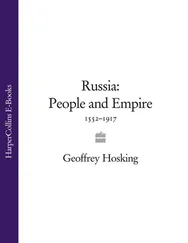The reason that the vertical of power failed was not due to the ‘mentality’ of the ruled, but the fact it became a ‘vertical of loyalty’ intertwined with a ‘vertical of corruption’. The crooked apex of the pyramid only sent distortions down through to the base of the structure. By prizing loyalty above all and being willing to permit embezzlement to be able to sustain it, the Kremlin gradually removed incentives to be efficient. Thus the vertical created a situation in the late 2000s where governors were no longer afraid of being ‘sacked’ from below as they were no longer elected, and not frightened of being ‘sacked’ from above providing they were loyal. The castration of TV news and the intimidation of investigative journalists further reduced pressure to provide efficient governance. Also, by never allowing United Russia or Nashi to develop into real political institutions, never ceding any policy control over to them, the Kremlin effectively ensured they ended up as patronage networks. These factors all worked against institutionalizing the Putinist vertical of power.
Most of the failures of Russian policy implementation occur when laws and projects have to be turned into reality beyond Moscow. This would not be a problem if the Kremlin had turned governors and bureaucrats into professional managers. The vertical of power is partially based on China’s hardwiring between Beijing and its provinces. Yet it missed out a key function of the Chinese system. Communist Party functionaries are working within a simple incentive structure that encourages them to grow their economies and over-fulfil the five-year plan. Successful functionaries will be promoted to higher office whilst poor-quality officials risk demotion. Not so in Russia. One study found there to be no link at all between governors’ reappointment and economic growth. In fact it showed a slight negative correlation. 41
For Pavlovsky the system’s initial weakness stemmed partially from the compromises the Kremlin elite had to make with local elites in 1999 in order to gather enough support to run the country: ‘The recruitment of regional and federal governments was done in clear terms; play by the rules, but play Moscow football. The agenda is set in the centre but this does not interfere with your local political technology.’ However, in 2012, over a decade of centralizing measures later, he would bemoan the fact ‘there is no vertical of power in Russia, only a vertical of loyalty. Even in Ukraine they have a more effective bureaucratic vertical that gets things done.’
The key problem with the vertical of power is that grabbing power back for the centre does not translate into improved governance. Putin’s orders overcentralized authority, broke up potentially threatening agencies and limited the power of regional elites. This led to a situation where only the Kremlin was in command and authorities beneath them had been constricted in their ability and autonomy to carry out its orders. Thus, unwittingly, the vertical of power created ‘manual control’ by refusing to delegate. The overcentralized ‘vertical’ had stunted necessary ‘horizontal’ bureaucratic ties: inter-agency links are weak, inter-regional contacts limited, individual initiatives stunted, all of which fuel bureaucratic turf wars. Overcentralization also saw local governors become disconnected from the sources of industrial and financial power in the Moscow conglomerates. Their reduced tax-raising powers meant they had less money to get things done. By the late 2010s the inverse problem of the late Yeltsin period was emerging; too much decentralization meant the regions were taking matters into their own hands, presently overcentralization means nothing can be coordinated or implemented without constant Kremlin micro-management.
Further distorting Russian governance is Putin’s return to the Soviet–Imperial system of ‘rotation’. Under Yeltsin, local elites had become self-contained with the exception of the FSB, which still followed the Stalinist system of ‘rotation’, with security chiefs being moved around Russia like pro-consuls to prevent them ‘going native’. Putin first imposed rotation on regional prosecutors, then police chiefs, then judges, before making governors appointees. By 2011 none of the six most senior officials in the typical Krasnodar or Irkutsk regions were locals. 42This increased Moscow’s control over the provinces but it did not improve governance. Those ‘serving time’ in the provinces often failed to build proper links to manage their bureaucracies, and had a tendency to behave like a quasi-foreign presence, treating their stations as temporary jobs before going to bigger things in the capital. These are fertile conditions for corruption. A trend has also emerged of those in rotation ‘commuting’ back to Moscow at weekends, where their families live. Across Russia this system has increased loyalty at the cost of efficiency.
Undermining the prospect of a genuine vertical of power was the institutionalization of a new pattern of behaviour amongst the Putinist elite across Russia. A Putinist political culture had emerged of national, bureaucratic, regional and even village elites monopolizing state resources, turning their political power into business influence, entrenching nepotism and accumulating privileges with impunity. On the one hand this reflects the still quasi-nomenklatural existence of the Russian bureaucracy. As in Soviet times they often enjoy the right to special hunting lodges, holiday resorts, tax exemptions and agency membership cards that they can wave through traffic jams, or even sometimes to get them out of arrest. On the other hand, this reflected the fact that Russia now had a quasi-Soviet system of bureaucracy but without any of its checks and balances. The Communist Party and the KGB had previously held each other in check. Under Putin’s system internal monitoring devices no longer apply, but neither do external ones, as Moscow has systematically removed democratic checks and balances from below.
By Medvedev’s presidency this trend had deepened to a point where a joke that reflected elite monopolization of resources became popular: ‘Russia needs more successful entrepreneurs – therefore Russia needs ministers to have more children.’ A clear illustration of how far this witticism had come to reflect reality was Medvedev’s attempt to end ‘double-hatting’ of ministers simultaneously serving as board members of state corporations, leading to conflicts of interest. In an illustration of how limited the vertical actually was, the replacement put forward for minister Viktor Zubkov, retiring from the post of chairman of the Russian Agricultural Bank, was the son of his political ally, Sergey Ivanov – Sergey junior. 43The same pattern can be observed elsewhere. For example, the son of the president of the Security Council found work advising Igor Sechin at Rosneft and was awarded the order of merit by Putin for ‘years of conscientious work’ despite having been in the job less than a year. 44The son of the head of Rosneft first found work within the corporation and then at Gennady Timchenko’s company Novatek, whilst the sons of both the chairman of the Federation Council and the former head of the FSB found jobs at state banks. 45
Across the country the process of defederalization and building the vertical had by the early 2010s not produced state efficiency. Instead they had entrenched elite corruption, oligarchic behaviour and the monopolization of resources, which were undermining the quality of governance in Russia. Discretion given to local chiefs has given Russia a distinctly variable geometry of liberalization and policy implementation. The Kremlin’s overlooking of regional ‘political technologies’ was most evident in the 2000s in the Volga Muslim republics of Tatarstan and Bashkortostan where ‘small Putins’ were allowed to consolidate control over the governing apparatus and oil interests.
Читать дальше












